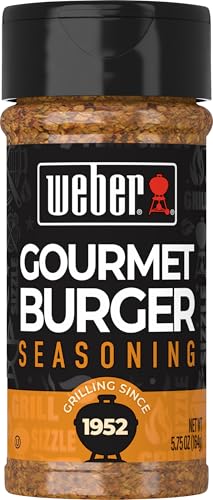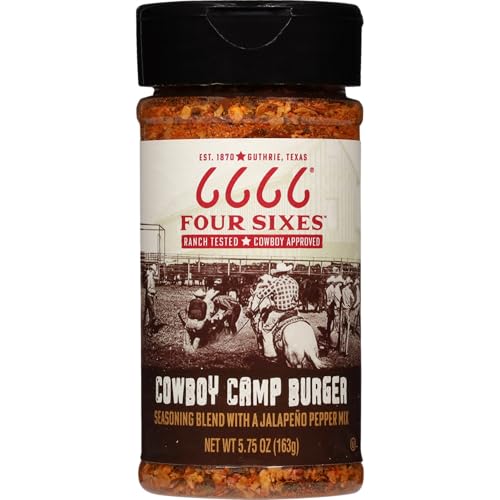Key Takeaways
- Evolution of Fast Food Burgers: Fast food burgers have transformed from simple beef patties in the early 20th century to gourmet creations featuring diverse ingredients, reflecting evolving consumer preferences.
- Cultural Impact: These burgers symbolize convenience and affordability, becoming integral to social gatherings and shared experiences, thus weaving themselves into the fabric of modern society.
- Health Conscious Trends: By the 1980s, health trends influenced burger recipes, leading to options with leaner meats and fresh toppings, catering to health-conscious consumers.
- Rise of Gourmet Options: The 2000s saw the emergence of gourmet burgers with premium ingredients, inspiring creativity in both fast food chains and home kitchens.
- Technological Innovations: Advances in preparation techniques and the rise of online ordering have reshaped how fast food burgers are made and enjoyed, enhancing speed, quality, and accessibility.
- Global Influence: Globalization has introduced regional flavors into the burger scene, leading to unique combinations that celebrate international cuisines, expanding the traditional burger landscape.
Fast food burgers have become a staple in our diets, offering quick and tasty meals that fit our busy lifestyles. I’ve often found myself craving that juicy patty with all the fixings, but have you ever stopped to think about how these beloved sandwiches have evolved over the decades? From their humble beginnings in the early 20th century to the gourmet creations we see today, the journey of fast food burgers is a fascinating one.
Overview of Fast Food Burgers
Fast food burgers have transformed dramatically since their inception. I’m passionate about burgers and can tell you how these sandwiches went from simple beef patties to complex flavor combinations. The early 20th century marked the rise of quick-service hamburgers, with chains like White Castle and McDonald’s paving the way for mass production. They focused on speed and affordability, appealing to busy consumers.
The 1960s and 70s saw an expansion in menu options; chains introduced different toppings, side items, and even breakfast offerings. This diversification reflected the changing tastes of the American public. By the 1980s, fast food burgers featured more than just lettuce, tomato, and pickles. People started craving innovative flavors and premium ingredients.
In the 1990s, gourmet burgers entered the scene, offering high-quality meat and unique toppings like avocado and gourmet cheeses. This trend encouraged me to explore more creative combinations. Today, the fast food burger landscape includes plant-based options, catering to a more health-conscious audience. The wide variety of choices makes it easy to experiment and create unique burgers at home, reflecting my enthusiasm for cooking and grilling.
With each decade, fast food burgers evolved to meet consumer preferences, incorporating influences from various culinary traditions. My experiences at the burger joint and with friends and family inspire me to continue crafting exciting burger recipes that honor this evolution while adding my personal touch.
Historical Evolution of Fast Food Burgers
Fast food burgers transformed significantly throughout the decades, and every era contributed unique flavors and styles. My journey as a burger enthusiast reflects this evolution, highlighting key milestones along the way.
The 1950s: Birth of Fast Food Culture
The 1950s marked the dawn of fast food culture, with McDonald’s revolutionizing the burger scene. The concept of quick and efficient service took root, appealing to busy families and workers. Simple yet satisfying, the iconic cheeseburger became a household staple. Cooked on griddles, topped with mustard and pickles, these early burgers emphasized speed and affordability. The passion for grilling began to spread, inspiring backyard barbecues and burger joints across America. I often think about the simplicity of those classic burgers, and how they laid the groundwork for my culinary creativity.
The 1970s: Expansion and Popularization
The 1970s saw a surge in the popularity of fast food, with franchises expanding rapidly. This era introduced a variety of toppings and side items, catering to evolving tastes. Burgers started to incorporate lettuce, tomatoes, and different cheeses, creating a more diverse menu. I love experimenting with these classic combinations, adding my twist to make something unique. Restaurants focused on enticing flavors and atmosphere, fueling the burger craze. Memories of summer picnics with friends and family remind me of the joy burgers bring, and their flexibility inspires me to create new styles that celebrate this era’s influence.
Key Ingredients: A Decade-by-Decade Analysis
Fast food burgers journeyed through significant changes, adapting to consumer preferences over the decades. Exploring these shifts reveals how ingredients evolved to create the burgers we cherish today.
The 1980s: Introduction of Health Trends
The 1980s marked an era where health trends started to influence burger recipes. Fast food chains began incorporating leaner cuts of beef and experimenting with turkey and chicken patties. I remember the excitement when a grilled chicken sandwich made its debut alongside the classic beef burgers. Lettuce, tomatoes, and other fresh toppings gained popularity as customers sought lighter options. Additionally, brands introduced lower-calorie condiments and whole wheat buns, allowing customers to enjoy their burgers without as much guilt. These choices didn’t just cater to health-conscious diners; they also sparked creativity in home kitchens.
The 2000s: Rise of Gourmet Burgers
The 2000s ushered in the rise of gourmet burgers, transforming how we perceive fast food. Premium ingredients became the norm, with chefs crafting delicious combinations of flavors. I crafted my own versions at a burger joint I once owned, often infusing unique toppings like caramelized onions, blue cheese, and even jalapeño aioli into my recipes. Chains began offering artisanal buns, organic produce, and specialty cheeses. This decade celebrated creativity, with many foodies eager to explore unusual combinations. Ingredients like avocado, sriracha, and even kimchi made their way onto the grill, leading to unforgettable flavor profiles. The emphasis on quality over quantity reshaped the fast food landscape and inspired home cooks, including me, to push the boundaries of traditional burger-making.
Impact of Technology on Fast Food Burgers
Technology significantly shaped the landscape of fast food burgers, enhancing preparation methods and service efficiency. I’ve seen firsthand how these advancements can transform a simple burger into an extraordinary meal.
Innovations in Preparation and Service
Innovations in burger preparation and service began in the mid-20th century, emphasizing speed and consistency. Assembly line techniques allowed fast food chains to produce burgers quickly. For example, using specialized equipment like automated grill systems and digital timers made cooking precise. These innovations cut down prep time and ensured uniformity, which is crucial for fast food. I’ve utilized similar methods in my kitchen, allowing me to focus on crafting unique flavors without sacrificing speed.
Influence of Online Ordering and Delivery
The rise of online ordering and delivery reshaped how people experience fast food burgers. Patrons now access menus with ease, allowing them to explore an array of options from various locations. This convenience encourages experimentation with flavor combinations or sides I may not have tried otherwise. Delivery apps help chains reach broader audiences, letting them cater to changing tastes. I’ve even delivered my unique burger creations to friends and family, sharing my passion for gourmet ingredients and innovative pairings.
Cultural Significance of Fast Food Burgers
Fast food burgers symbolize more than just quick meals; they represent a cultural phenomenon that has woven itself into the fabric of society. Fast food burgers mean convenience, offering tasty options for people on the go. I cherish how these sandwiches became staples during family outings, lunch breaks, and late-night snacks, creating shared experiences around their flavorful allure.
Fast food establishments pioneered a culture of affordability and accessibility. Chains like McDonald’s and Burger King made burgers widely accessible, allowing everyone to indulge without breaking the bank. I appreciate how these burgers kept pace with changing lifestyles, catering to busy lives while still satisfying hunger.
In recent decades, fast food burgers evolved beyond the simple beef patty. The rise of gourmet burgers introduced diverse flavors and premium ingredients, appealing to evolving culinary preferences. People began craving unique combinations; I often create my own blends of spices and toppings, experimenting with flavors that push the boundaries of traditional burgers.
Globalization played a significant role in the cultural significance of fast food burgers. Regional tastes and preferences sparked new creations inspired by international cuisines. For example, I love exploring Asian-inspired burgers, featuring teriyaki glaze and crunchy slaw, which blend cultures in delightful ways. This blend of influences enhances the burger scene, demonstrating how these sandwiches adapt and thrive in a globalized world.
Additionally, technology transformed the way we experience fast food burgers. Innovative cooking techniques improved burger quality, and the rise of online ordering opened doors to convenience. I revel in using cooking gadgets like air fryers and smokers to elevate my creations at home. This modern technology allows me to experiment constantly, creating unique burgers that celebrate both tradition and innovation.
Fast food burgers connect us, nurturing a sense of community. They evoke memories of shared meals and laughter with friends and family. As I craft new recipes, I reflect on this cultural significance, honoring the journey of fast food burgers and their enduring place in our hearts and stomachs.
Conclusion
Fast food burgers have truly come a long way since their humble beginnings. I love how they’ve adapted to our changing tastes while still holding onto that comforting essence. Whether I’m enjoying a classic cheeseburger or experimenting with gourmet flavors at home, there’s something special about these sandwiches.
It’s fascinating to see how technology and creativity have shaped the burger landscape. Each bite tells a story of innovation and nostalgia. As I reflect on my own burger journey, I can’t help but appreciate the way these meals bring people together. Here’s to many more delicious burgers in the future!





